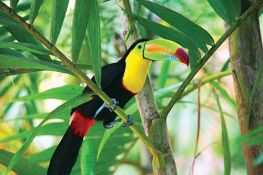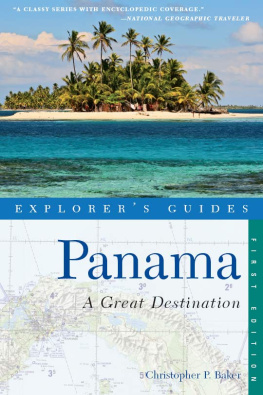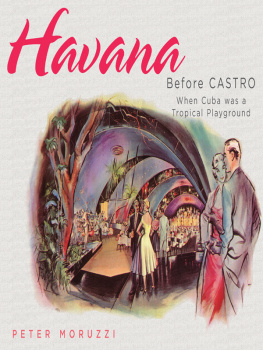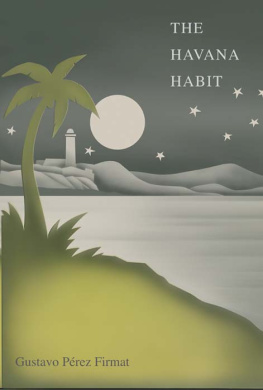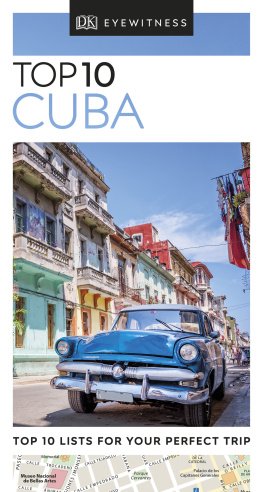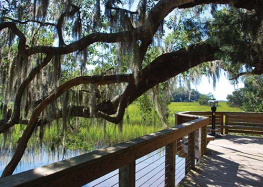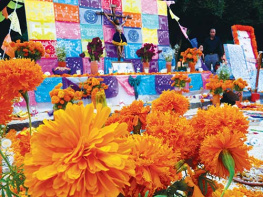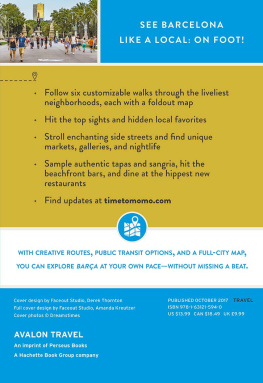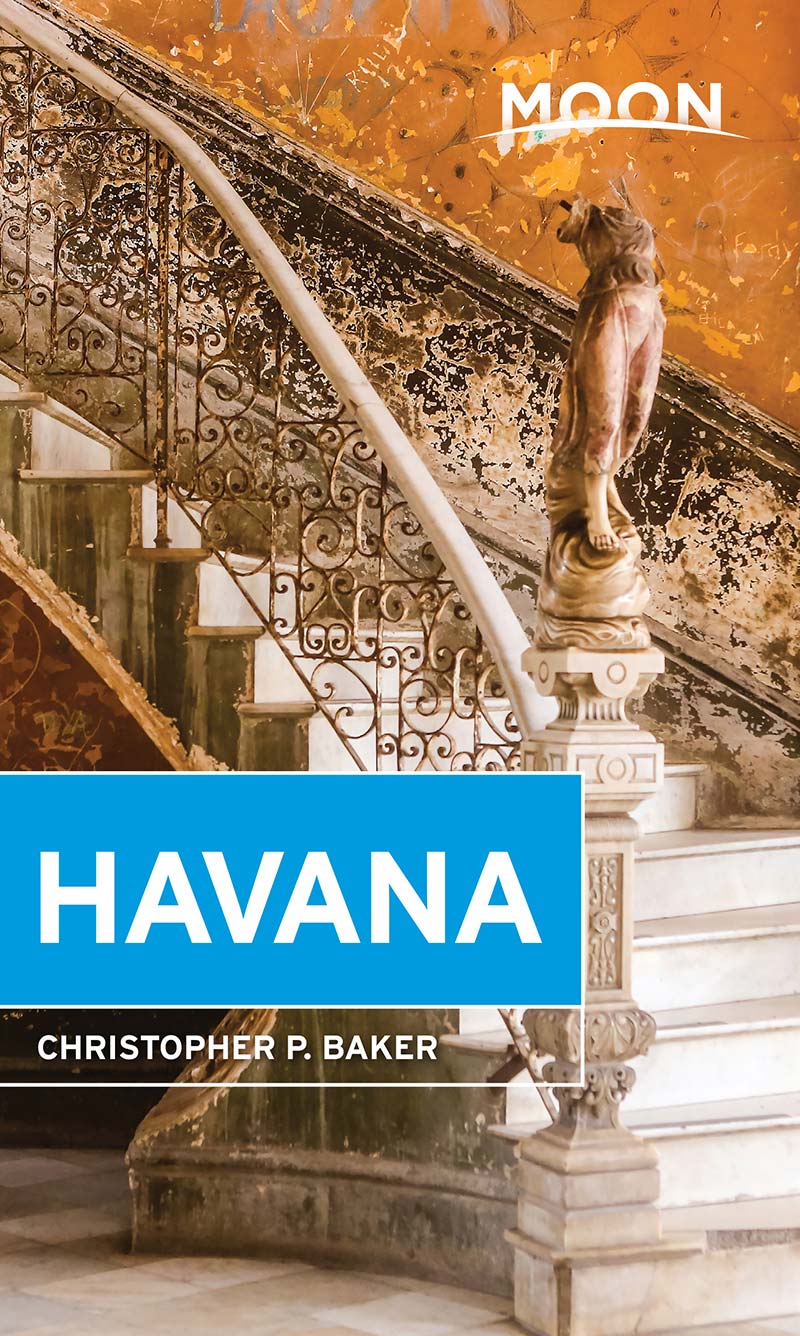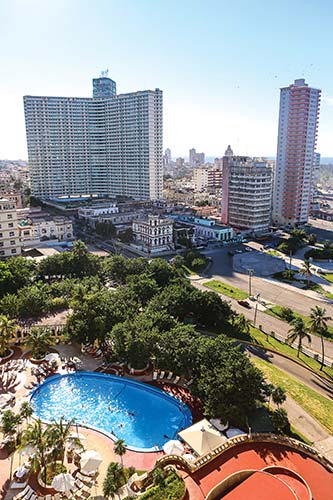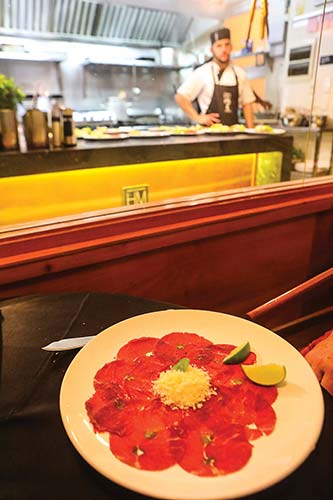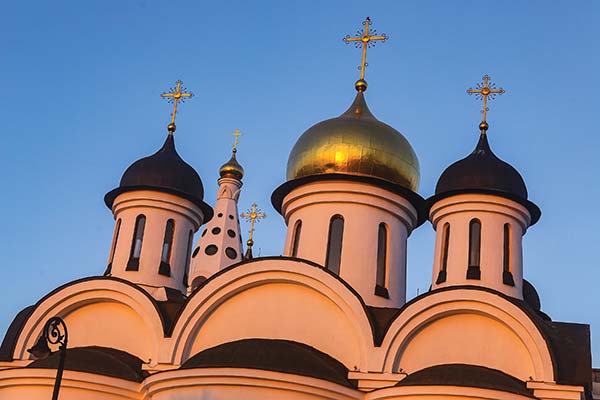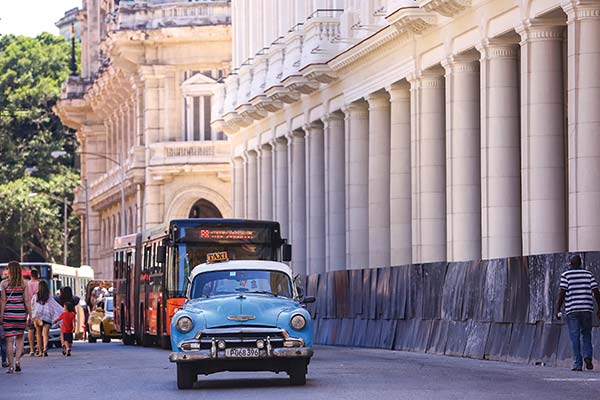Sacra Catedral Ortodoxa Rusa, Habana Vieja.
Set foot in Havana and you will succumb to its enigmatic allure. Countless writers have commented on the exhilarating sensations that engulfed them in this most beautiful and beguiling of Caribbean cities. It is impossible to resist the citys mysteries and contradictions.
Havana has a flavor all its own, a merging of colonialism, capitalism, and Communism into one. One of the great historical cities of the New World, Havana is a far cry from most Caribbean capitals. The buildings come in a spectacular amalgam of stylesfrom the academic classicism of aristocratic homes, rococo residential exteriors, Moorish interiors, and art deco and art nouveau to stunning exemplars of 1950s moderne.
At the heart of the city is enchanting Habana Vieja (Old Havana), a living museum containing of Spanish-colonial buildings, Baroque churches, casas particulares, and world-class cuisine.
Calle Agramonte, Habana Vieja
Habana Vieja
The finest collection of Spanish colonial buildings in the Americas lines Habana Viejas cobbled streets. Stroll the tree-lined Prado, hang out in Hemingway's old haunts, and people-watch in quintessentially Cuban plazas.
Centro Habana
Although its once-regal mansions are now dilapidated, this area features shopping along Calle San Rafael and in Cuatro Caminos, the countrys largest farmers market, and the MalecnHavanas seafront drive and undisputed social gathering spot.
Cerro and Diez de Octubre
South of Habana Vieja and Centro the land rises gently to Cerro, which developed during the 19th century as the place where many wealthy families maintained summer homes on the cooler cerro (hill). The area is replete with once-stately quintas in neoclassical, beaux-arts, and art nouveau styles.
Vedado and Plaza de la Revolucin
Hilly Vedado is Havana at its middle-class best, with the University of Havana, historic Plaza de la Revolucin, and prime hotels and restaurants like the lavish Hotel Nacional. Walking La Rampa will lead you to cinemas, nightclubs, art deco buildings, and the best ice cream in the city at Parque Coppelia.
Playa: Miramar and Beyond
With their luxurious residences and new apartment buildings, Playa and Miramar are the face of Cubas quasi-capitalist makeoverand possibly its future. The shoreline along 1ra Avenida rivals Miamis South Beachnot so many miles yet worlds awayand the famed Tropicana nightclub in Marianao is a must-see.
Suburban Havana
Venture outside the city to check out the national zoo, Parque Lenin, ExpoCuba, Hemingway's former home, charming provincial towns, botanical gardens, and the popular beaches of Playas del Este.
Before You Go
Seasons
Cuba has fairly distinct seasons: a relatively dry and mild winter (November-April) and a hot and wet summer (May-October). Early spring is the ideal time to travel, especially in the Oriente (the eastern provinces), which can be insufferably hot in summer. Christmas and New Years are the busiest periods; many accommodations and car rental agencies sell out then, and finding a domestic flight is nearly impossible. Hotel prices are usually lower in summerthe low season (temporada baja)when hurricanes are a slim possibility. Tropical storms can lash the island even in winter, however.
Transportation
Most international visitors fly into either Havanas Jos Mart International Airport or Varaderos Juan Gualberto Gmez International Airport. Cuba is a large island (more than 1,000 kilometers east-west). In Havana, getting around is simple thanks to an efficient taxi system. Traveling between cities by public transportation, however, can be a challenge. Vazul tourist buses connect major cities and resorts, as do domestic flights. Renting a car is recommended for serendipitous travelers, but cars are in short supply and roads are full of hazards.
Passports and Visas
Visitors to Cuba need a passport valid for at least six months beyond their intended length of stay; a ticket for onward travel; and a tourist visa, typically issued when you check in for your plane to Cuba. Stays of up to 30 days are permitted (90 days for Canadians), extendable one time.
U.S. Citizens
U.S. law bans travel by individuals who dont fit into one of the 12 license categories of allowable travel. However, every U.S. citizen qualifies for individual travel under the people-to-people license category. Travel is preapproved and self-policing. The U.S. government will take you at your word when your stated purpose is meaningful interaction with Cubans. However, tourism is not allowed. For more details, see .
The following fast-paced itinerary combines a sampling of the top sights and experiences for those intent on seeing the best Havana has to offer.
Days 1-2
Arrive at Jos Mart International Airport in Havana; transfer to a hotel or casa particular in Habana Vieja or the Vedado district. Take a self-guided walking tour of Habana Vieja, including the Plaza de Armas, Plaza de la Catedral, and Plaza Vieja, and taking in the key museums, galleries, and shops along the surrounding streets. Return at night to savor the plazas lit by traditional gas lanterns. Dont fail to sip a


